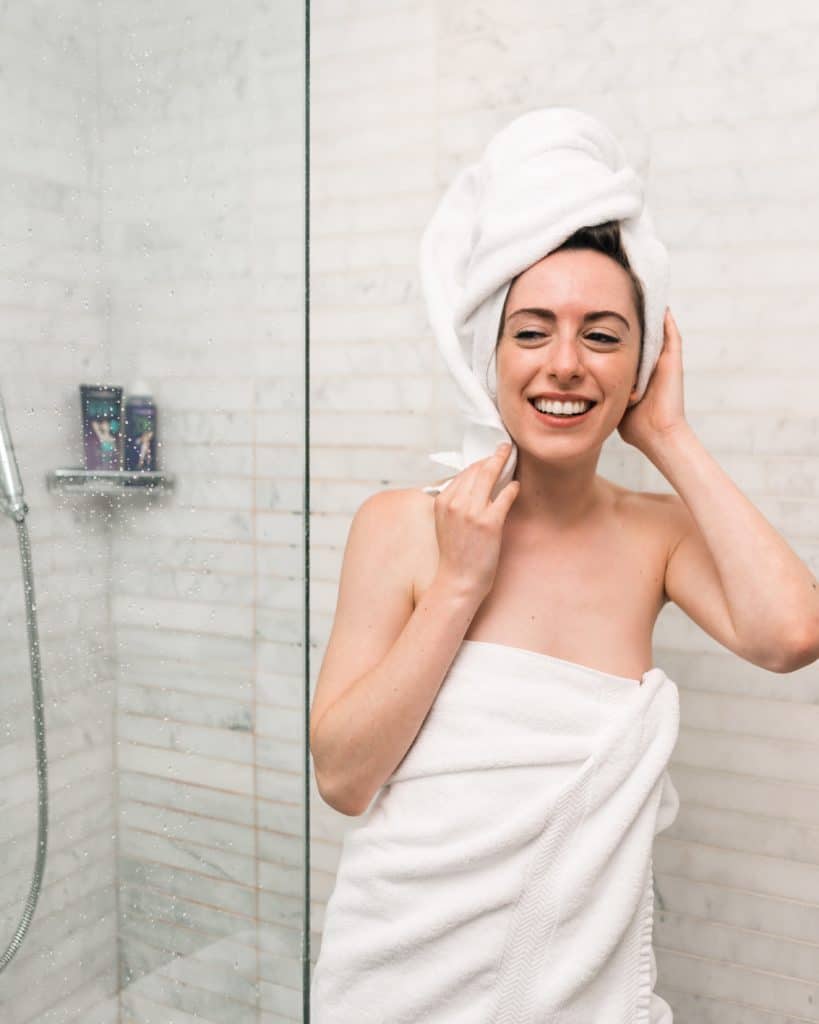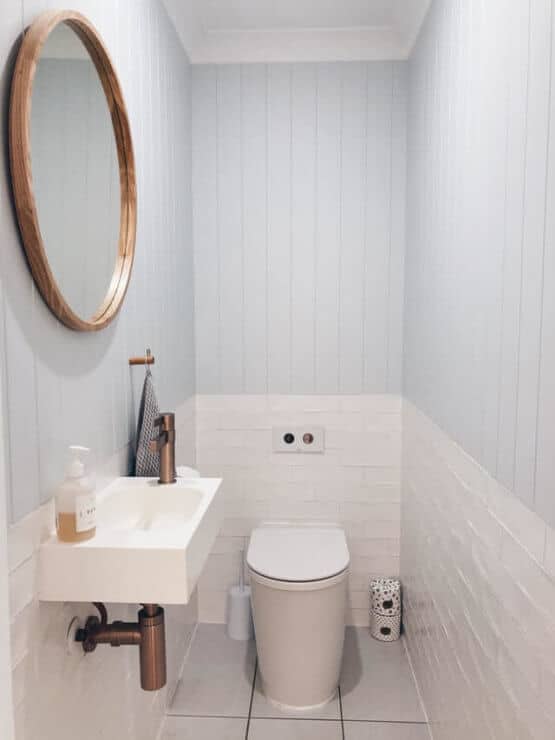Getting ready for a nice hot soak in the morning but all you get is a cold water shower? No hot water in shower can have multiple causes.
The problem can be in the water heater, the pipes, or in the shower unit. Extremely cold weather or increased hot water consumption can also be responsible for the cold water issue.
Diagnosing the underlying cause correctly starts with observing symptoms. No hot water at all can have completely different causes than having hot water first but turning cold afterwards.
In this post we provide a quick guide for diagnosing cold water in shower problems. After identifying the cause, you will be provided with the solution to your issue.
Water heater malfunction

The first step towards diagnosing your no hot water in shower problem is checking if other fixtures have this problem. A common situation is no hot water in shower but hot water in sink.
However, if you have no hot water in shower or sink, the problem is very likely caused by the water heater.
Possible issues with your water heater are:
- The heater is not set correctly;
- A fuse has blown;
- Faulty temperature controls;
- Defective parts in the water heater such as a burner not working properly;
- A malfunctioning thermostat that shows inaccurate temperatures. As a result, water is not heated to the desired temperature;
- Obstructions or sediment buildup in the water heater;
- Broken dip tube – this is a part that transports cold water to the bottom of the tank. When this part is defective, cold water escapes near the top of the tank. It goes to various outlets you are using, including your shower;
- Gas leaks – this is a very dangerous situation as there may be chances of explosion. Turn off the gas line, leave your home, and call for the professionals!
Problems differ based on the type of heater you are using: gas or electrical. Common gas heater problems are:
- Burned pilot light;
- Empty gas supply;
- A burner not working properly;
- Gas leaks (again, risk of explosion, so be very careful!)
Electric heaters can also suffer from multiple problems:
- Defective electrical panel;
- Problems with the auto cut-off switch;
- Leaking water tank.
Water heater limitations

There is also a difference between tank water heaters and tankless models.
The former store hot water so it is readily available. The shower will run out of hot water when the hot water in the tank has finished.
So, your water heater stores water in a tank so you get it on demand? Your water may not have the optimal temperature at all times.
In a crowded household, the consumption of hot water is high. You might need to get a larger capacity heater or use a powerful tankless model.
A tankless water heater, on the other hand, supplies hot water on-demand. Once you turn the water off, the heater ceases to warm up water.
The unit is small and too many people use hot water at the same time? Do you have multiple bathrooms and showers? You will probably be dealing with cold water in the shower. If more than one person takes a shower at the same time, the water may not be warm enough.
An electric tankless water heater will be satisfactory for one or two people only. When somebody else in the household is using hot water at the same time, the heater will not sufficient. It will not be able to heat up water rapidly enough for both users and the shower will not be warm.
Additionally, some water heater models follow on and off cycles. If you are showering when the heater is switching to off, you will possibly end up with a cold shower. The solution is to adjust your routine to the water heater schedule.
Problems with the shower valve
The shower valve is a mixing valve installed into your shower faucet. It blends hot and cold water together, enabling you to obtain the desired water temperature. Multiple things can go wrong with this mixing valve:
- The mixing valve is not set correctly. Its position can be flipped with that of other components. This happens often if the valve is not installed by a professional;
- The mixing valve is not working. The rubber parts inside the mixing valve deteriorate in time. The solution is to replace the valve;
- Blockages within the shower pipes. Broken rubber pieces in the mixing valve can break, move around, and cause blockages within the pipes. You will need to take out every piece of rubber that is obstructing your pipes;
- The mixing valve is causing a plumbing crossover. Some defective valves may allow too much cold water to combine with hot water. This phenomenon is called a plumbing crossover. A situation like this may require a professional looking at your plumbing system.
The anti-scald device is set too high
Anti-scald devices are found in newer homes and are excellent at preventing accidents. They are recommended in households with young kids or elderly individuals. [1]
The anti-scald valve is a vital part of your shower faucet, but it can cause a series of issues. It is meant to prevent very high temperatures but at times it can give you a cold shower.
One possibility is for the anti-scald valve to be improperly installed. If the top and bottom segments are not marked clearly, you can mistake them. As a result, the valve can be in the wrong position. The solution is to uninstall the valve and put it back in the right position.
Any plumbing fixture can get clogged when used for prolonged times. The same goes for the anti-scald valve. Take the valve out and wash it thoroughly with clean water.
Last, the valve may not be set up correctly. The setting can be on the low side and this will prevent you from getting hot water. Adjust the valve until you are satisfied with the temperature of the water.[2]
The heater is not set at the right temperature

The cause of the problem can be simpler than you imagine.
Did you know that the perfect temperature to set your heater is 120 degrees Fahrenheit? This setting enables the water heater to provide both hot water and regular water.
However, most heaters allow you to manually set the temperature range. If you set it lower than 120, water may not be hot enough for a nice relaxing shower. Look for the panel and reset the temperature to a higher level if it is too low.
Cross-connected pipes issues – a common cause of no hot water in shower
A common and complicated pipe-related issue causing no hot water in shower is cross-connected pipes in your home.
Cross-connected pipes was a plumbing solution in the past when mixing valves were not in use yet. Installing cross-connected pipes enabled builders to allow the flow of cold and hot water into showers.
No matter how effective this solution was in the past, now it is considered obsolete. But if you live in an older home, the presence of such pipes can cause you problems. Unfortunately, these pipes can be hard to reach and you may have to call a plumber to investigate this problem.
Other pipe issues
There are several other things that can go wrong with your pipes. Corroded pipes is a common occurrence.
Aside from contaminating your water supply, damaged, corroded pipes can reduce water pressure. Hot water simply takes longer to reach its destination when pressure is low.
Water going into the heater is too cold
Did you notice water is turning lukewarm when weather gets cold?
Your cold shower problem could be related to the climate. When water going into the heater is too cold, the resulting shower water could be colder as well.
Fortunately, the solution to this particular situation is very simple. You need to adjust the thermostat so water is ready when you need it and at the desired temperature.
Bottomline
Finding out why you have no hot water in the shower is not simple.
You may be lucky and find the cause immediately. Maybe you just remodeled the bathroom and you forgot to turn on the electricity.
Or you may have bad luck and have to check everything: shower fixture, pipes, heater, and environmental factors.
Check for the possible causes described in this article, one by one. With a little bit of patience and perseverance, you will get rid of those chilling cold showers!

Michael Davis is a heating & plumbing expert who currently works as independent contractor in SC. He also writes for Plumbertip.
For almost 10 years he worked on various plumbing tasks across South Carolina.


